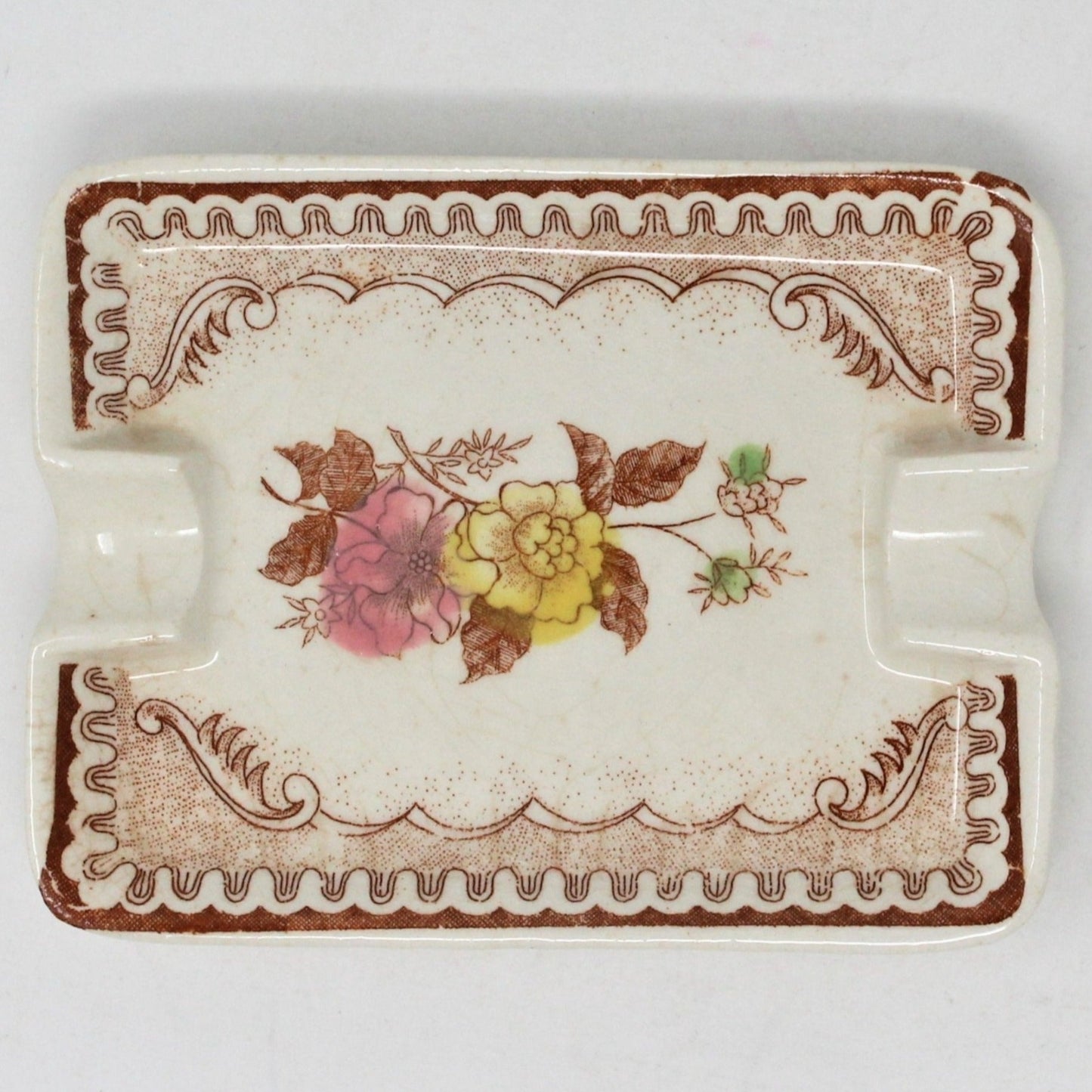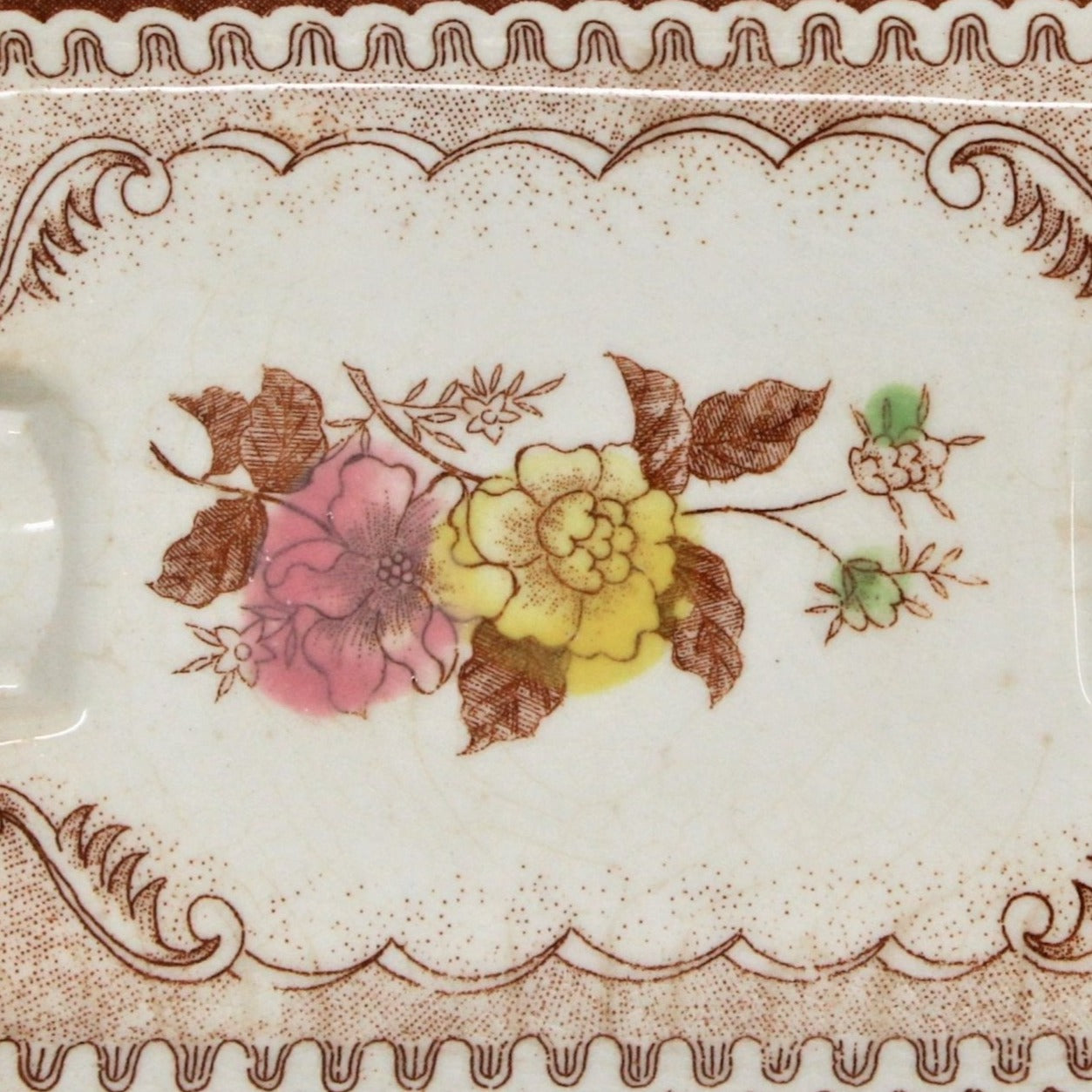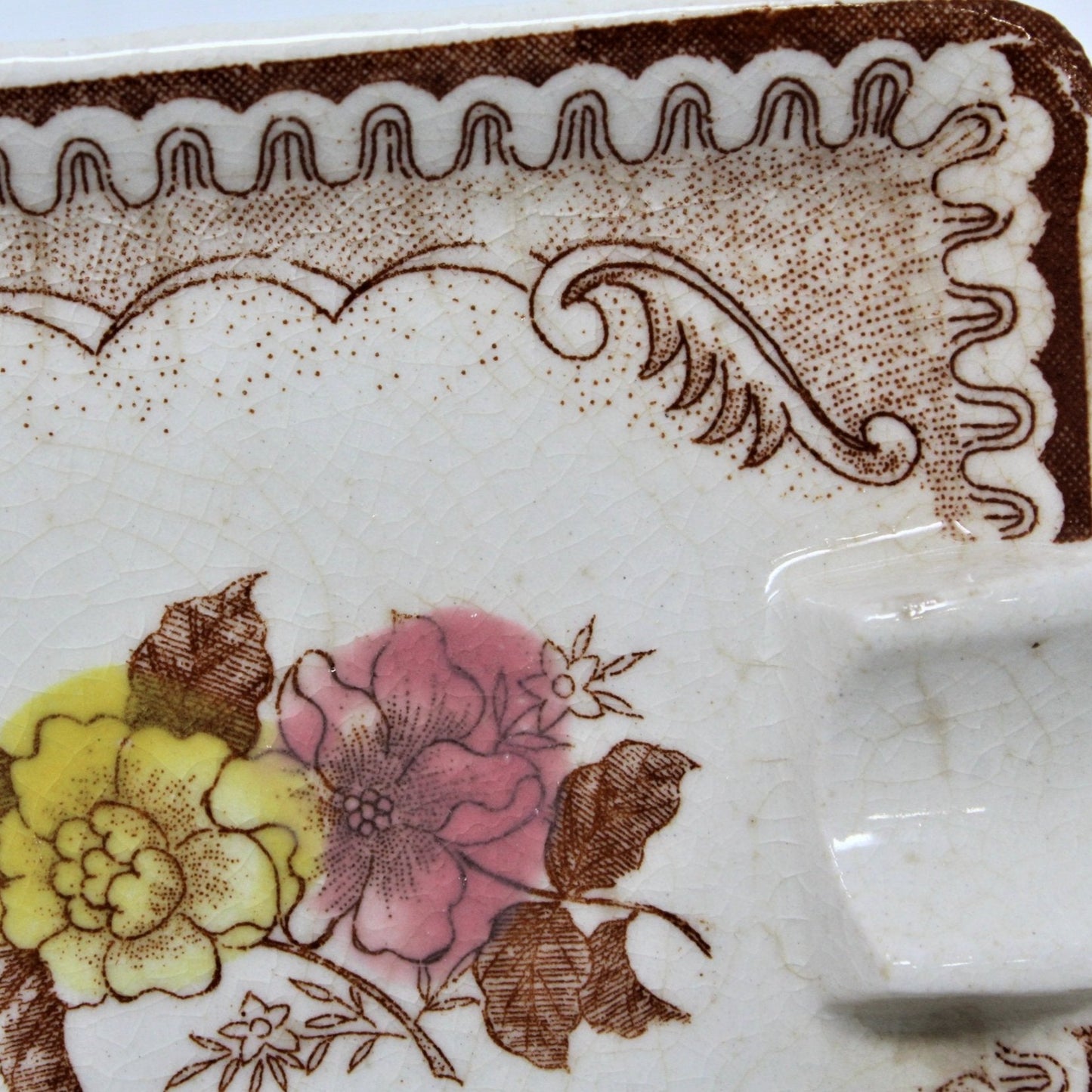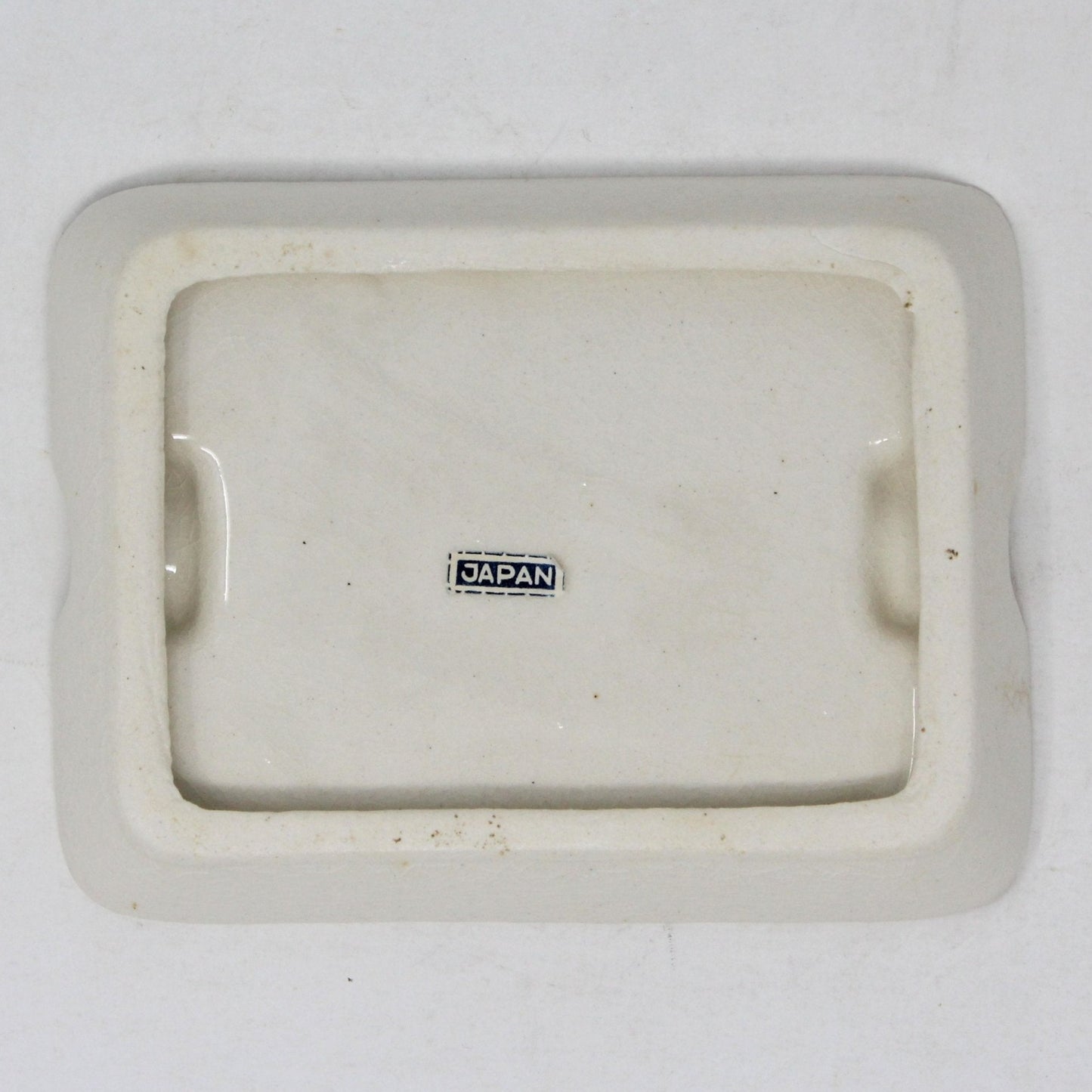Brown & Richie
Ashtray, Brown & Richie, Oriental Gardens, Brown Transferware, Antique
Ashtray, Brown & Richie, Oriental Gardens, Brown Transferware, Antique
Couldn't load pickup availability
- Antique Ashtray, Oriental Gardens, Brown Transferware, Earthenware, Japan Imports, Tobacciana Collectibles, Brown & Richie, Gifts for Smokers, (Discontinued)
- Made in Japan
- Antique: 1920's - 1930's
- Details: This is an absolutely beautiful example of polychrome transferware. The pattern is known as "Willow Brown Polychrome Transferware", a variation on the popular Blue Willow. It is hand colored underglaze in translucent pink, green, yellow and blue, made by Brown & Richie. We have acquired many pieces in this pattern, (see additional listings for "Oriental Garden" if interested). There is no backstamp on this ashtray but it retains the original "Japan" sticker. A lovely addition for the bar, outdoor patio or as part of your collection. Also great at the table when used as chopstick holders. We have two available, both in same condition, if you're interested in both ashtrays, please Contact Us for a 20% discount.
- Materials: Earthenware
- Dimension: 4.25 inches Long, 3.25 inches Wide. Two indentations
- Condition: Vintage - Used. Very Good Vintage Condition. There is lots of crazing on this piece, which is typical in this type of early 20th century pottery glaze and being this old, we feel it's acceptable. Please review all pictures and make sure you love this item before purchasing, we can't accept returns. Please remember these are VINTAGE and ANTIQUE items, they are NOT new, every effort has been made to show any scratches, wear and imperfections.
Not much is written about Brown & Richie Ltd. They were a small pottery located in Staffordshire England that specialized in polychrome transferware. They created several series of historic and Oriental patterns. Staffordshire is a region that was, (and still is), home to many English porcelain makers. the area is well known for "Blue Ware" a porcelain design that originated in Staffordshire.
Polychrome is the process of applying several colors by hand. Making multicolor (polychromatic) transferware was an expensive, time consuming combination of hand painting machined designs. The process was abandoned in the 1930s. Makers continued the popular scenic transfers in the more cost effective single color (monochromatic) process.
Share








